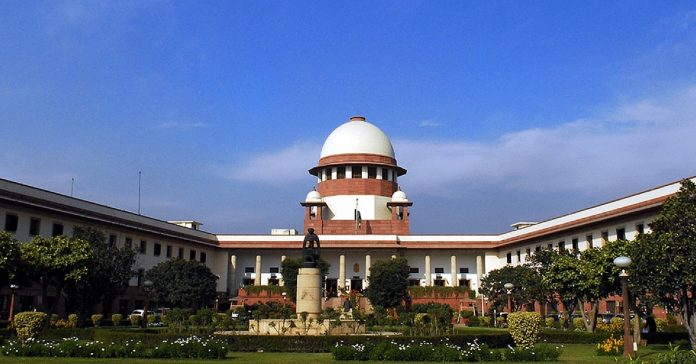This article is written by Manya Dudeja, from the University School of Law and Legal Studies, Guru Gobind Singh Indraprastha University. This article sheds light on the trend of filing frivolous PILs and thereby, abusing the concept itself.
Table of Contents
Introduction
“The court has to innovate new methods and strategies to provide access to justice to large masses of people who are denied basic human rights, to whom freedom and liberty have no meaning.”
The above lines were directly quoted by the champion of Public Interest Litigation (PIL) and the 17th Chief Justice of India, Justice P.N. Bhagwati in the case of SP Gupta v. Union of India. This was the intent that went behind the idea of introducing PIL, in order to reach out to those who cannot themselves reach the courts. However, one must acknowledge, no matter how well intended an initiative is, it is occasionally likely to be misused by nuisance-creating elements in society. A similar fate awaited the Public Interest Litigation. Despite its intended purpose of empowering and strengthening the underprivileged in society, the PIL has frequently been misused as a weapon and has often wasted the precious time of courts.
However, this is not to say that we render useless the weapon itself, ways have to be found to minimize such abuse of this life-saving weapon. The Supreme Court in 2017, while dismissing a frivolous petition commented on how the concept of PIL will have to be revisited due to its misuse. It also talked about how the concept was introduced to safeguard the poor, the oppressed, and the needy whose fundamental rights are frequently infringed upon and violated and whose grievances remain unrepresented, unheard, and unnoticed, but how it is now being abused to achieve political mileage and popularity.
The aim of this article is to understand the concept of PIL in its origin and then go on to compare it with its misuse. In order to understand this abuse better, we will also be dealing with some case laws.
Concept of PIL
According to Black’s law dictionary, Public Interest Litigation refers to such legal action, which is initiated in a court of law in order to enforce public interest or general interest in which the common people have some interest, pecuniary or general by which their legal right or liability is affected.
In simpler terms, PIL is a tool to safeguard the socially disadvantaged communities who cannot represent themselves and claim justice in a court of law. People who are not directly affected can now file and fight cases on behalf of these people, the only condition being that the issue should pertain to the general welfare of the people and should not be just a private interest of the petitioner. The concept also relaxed the erstwhile principle of locus standi, which meant the capacity of a person to bring an action against something or someone, i.e. a person had to be personally aggrieved to bring an action against another. Now, a PIL could be filed even though the issue does not directly affect the petitioner.
Origin of PIL in India
The origin of Public Interest Litigation in India can be traced back to the efforts of Justice P.N. Bhagwati and Justice V.R. Krishna Iyer. A news report which talked about the hardships faced by undertrial prisoners in Bihar who had to spend years in jail without being punished caught the eye of a lawyer who then filed a petition in the Supreme Court to defend these undertrial prisoners. This case, Hussainara Khatoon v. State of Bihar (1979), became the first PIL to be heard. In 1980, the case of Sunil Batra v. Delhi Administration was taken up, in which an inmate of the Tihar jail sent a scribbled piece of paper to Justice Krishna Iyer, complaining about physical torture of prisoners in Tihar. Justice Iyer got this converted into a PIL and took up the issue. However, later such practices of filing PILs were abandoned. Over the years, the number of PILs filed has only gone up with many public-spirited citizens and social activists stepping up to help the disadvantaged.
Constitutional provisions
Public Interest Litigations can be filed in the Supreme Court and High Courts by invoking their writ jurisdiction under Article 32 and Article 226 respectively.
- Article 32 deals with the rights of citizens to move to the Supreme Court against violation of rights conferred by Part III of the constitution, which can issue the writs of mandamus, habeas corpus, certiorari, and quo-warranto as applicable to the case.
- Article 226 empowers High Courts to issue writs within their jurisdiction in cases of violation of rights mentioned in Part III of the Constitution.
Possible reasons why people misuse or abuse the concept of PIL
Tool for harassment
Many people have started using PIL as a tool in order to register false cases to harass people. This has become easy as it is cheaper to file a PIL, as opposed to private litigation. The relaxation to have a locus standi has often led people to pose their private interests as public interests. People have started misusing the PIL to settle a personal vendetta and serve political or business interests. The court has warned that PIL should be treated as a “public interest litigation” and not a “private interest litigation”.
Professional PIL shops
Solicitor General, Tushar Mehta called PILs, “professional PIL shops” and called for them to be abrogated. He said that in order to furnish replies for frivolously filed PILs, government officials end up wasting their precious time and this can be harmful to the country. On a later date, he also called them “self-employment generating petitions” on which the court should not waste time.
Publicity
A lot of times, lawyers, and more recently, law students have tried to use PIL in order to gain publicity. The court on various events has even gone on to call these, “publicity interest litigation”. The court stressed how such petitions instead of fulfilling the objective of PILs damage the public good.
Case laws
The recent years have seen a flood of PILs being filed by law students, lawyers, and other stakeholders. With the increasing number of PILs filed, a trend has emerged of filing frivolous petitions which is contrary to the soul of the concept of PILs. The Supreme Court and High Courts have time and again warned against such conduct. However, the Covid-19 pandemic only gave rise to the filing of more such petitions.
SPV Paul Raj v. The Chief of Electoral Officer and Anr.
The Public Interest Litigation, in this case, was dismissed as follows. The following are the facts of the case:
- The petitioner prayed that the High Court may apply its power under Article 226 of the Indian Constitution to issue a writ of Mandamus directing the respondents to issue orders to conduct compulsory medical tests of candidates who were contesting in the Tamil Nadu Legislative Assembly Elections that were in process.
- This was prayed to protect the 6,29,43,512 voters from being infected with COVID-19.
The court held that there was no basis for such a petition and it was completely frivolous. It also asked the petitioner to be more responsible before filing such petitions in court. The petition was dismissed with costs and the petitioner was banned by the court from filing petitions for a period of one year without taking prior leave of the Bench.
Lalit Valecha v. Union of India
A PIL was filed in the Delhi High Court to direct News and TV channels to follow the Code of ethics and regulations while reporting sensitive content of mass deaths and suffering. It prayed to curb the spread of negativity by restraining media channels from broadcasting such news. The petition also gave the ground that freedom of speech and expression under Article 19 is not absolute.
The petition was dismissed by the bench and it was pronounced that reporting the number of deaths to the public is not negative news.
Pratyush Prasanna and Anr. v. State of NCT of Delhi
The Delhi High Court dismissed a petition which alleged that the Government of Delhi was misusing public money. The petition prayed for an investigation into the funds collected by the Delhi Government for Covid-19 relief. The petitioner made no effort to find out the information using the Right to Information Act, 2005, and merely relied on a tweet posted by someone else. The court pulled up the petitioner for not doing any homework before filing the petition. The petitioner was also asked to pay Rs 50,000 for misusing the PIL.
Rajeev Suri v. The Delhi Development Authority
The petition was initially filed before the Delhi High Court, but the Supreme Court transferred it to itself. This petition challenged the possibility of the Central Vista project and the way clearances were obtained for environment, heritage, and land use matters. It also called this a matter of high political significance which required judicial scrutiny.
The Supreme Court lamented and called this a misuse of the concept of PIL. It reiterated the intention behind PIL and said that PIL was not meant to make the judiciary the superlative authority over everyday governance but to open the doors of constitutional courts for those humans who were facing injustice and to secure their rights.
Suggestions to prevent the abuse of the concept of PIL
In the opinion of former Attorney General, Soli Sorabji, three basic rules should be followed in order to regulate the filing of Public Interest Litigations. They are:
- Not hearing uncertain and doubtful PILs and rejecting them at the beginning itself. Also, it is suggested to impose high costs on them so that they act as a deterrent in the future.
- Petitions which are directed against some socio-economic regulation or important project after a long time should be outright rejected by applying the general rules of litigation.
- In order to gain trust, PIL practitioners should be asked to provide assurance in the form of undertaking to the court that they would recover the damages, in case the PIL is dismissed.
- The media should highlight cases of abuse of PIL, just as much as it glorifies the concept of PIL and its success. By conducting various kinds of programs and through means of visual media, it can spread awareness about the abuse of PIL and the punishment given to such petitioners to create a deterrent effect on others.
- Lawyers should actively refuse to represent such malicious petitioners. Discipline and ethics should be strongly emphasized in the profession and lawyers should not take up to defend such causes which abuse the PIL.
- The court should check that the reason for the filing of the petition is bona fide and is not backed by private interests. It should serve the manipulated or corrupt.
Conclusion
Public Interest Litigation is an important component of judicial activism. It strengthens the judiciary to come to the rescue of its people. Hence, it is pertinent that the concept is wisely used and is not abused to make personal gains. Recent years have seen examples of such abuse and exploitation of the PIL, which should serve as a deterrent to prevent similar incidents in the future. If used in the correct manner and for the right causes, PIL can prove to be an asset to the people. New ways and methods should be formulated to sieve out frivolous petitions so that justice is served fairly and well within time. The Supreme Court has laid down guidelines to be followed with respect to Public Interest Litigation, courts should keep these rules in mind while dealing with Public Interest Litigations to avoid frivolous petitions and save time.
References
- https://www.barandbench.com/apprentice-lawyer/the-unparalleled-legacy-of-justice-pn-bhagwati#:~:text=Juhttp://www.legalserviceindia.com/article/l273-Public-Interest-Litigation.htmlstice%20Bhagwati%20was%20the%20messiah,In%20SP%20Gupta%20vhttps://www.pilsni.org/about-public-interest-litigation
- Indian Constitution at Work- NCERT
LawSikho has created a telegram group for exchanging legal knowledge, referrals and various opportunities. You can click on this link and join:












